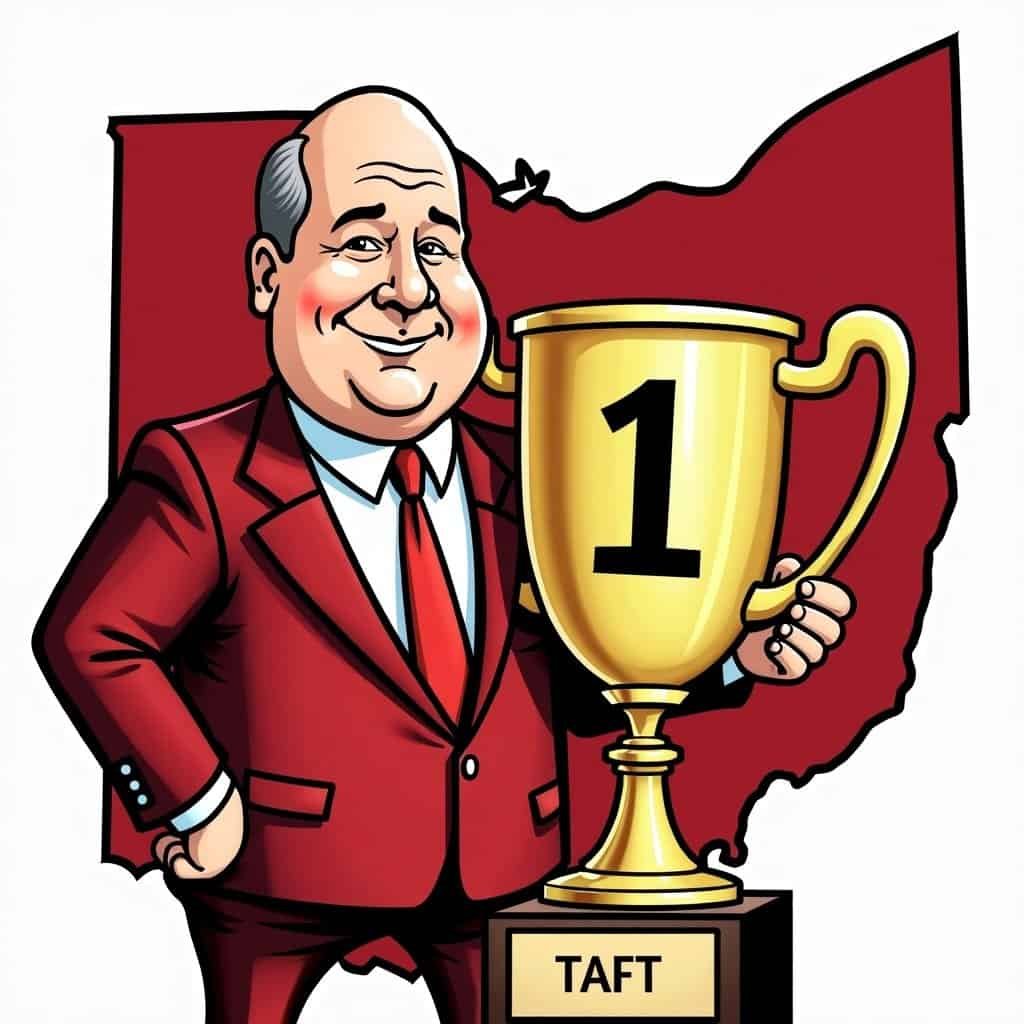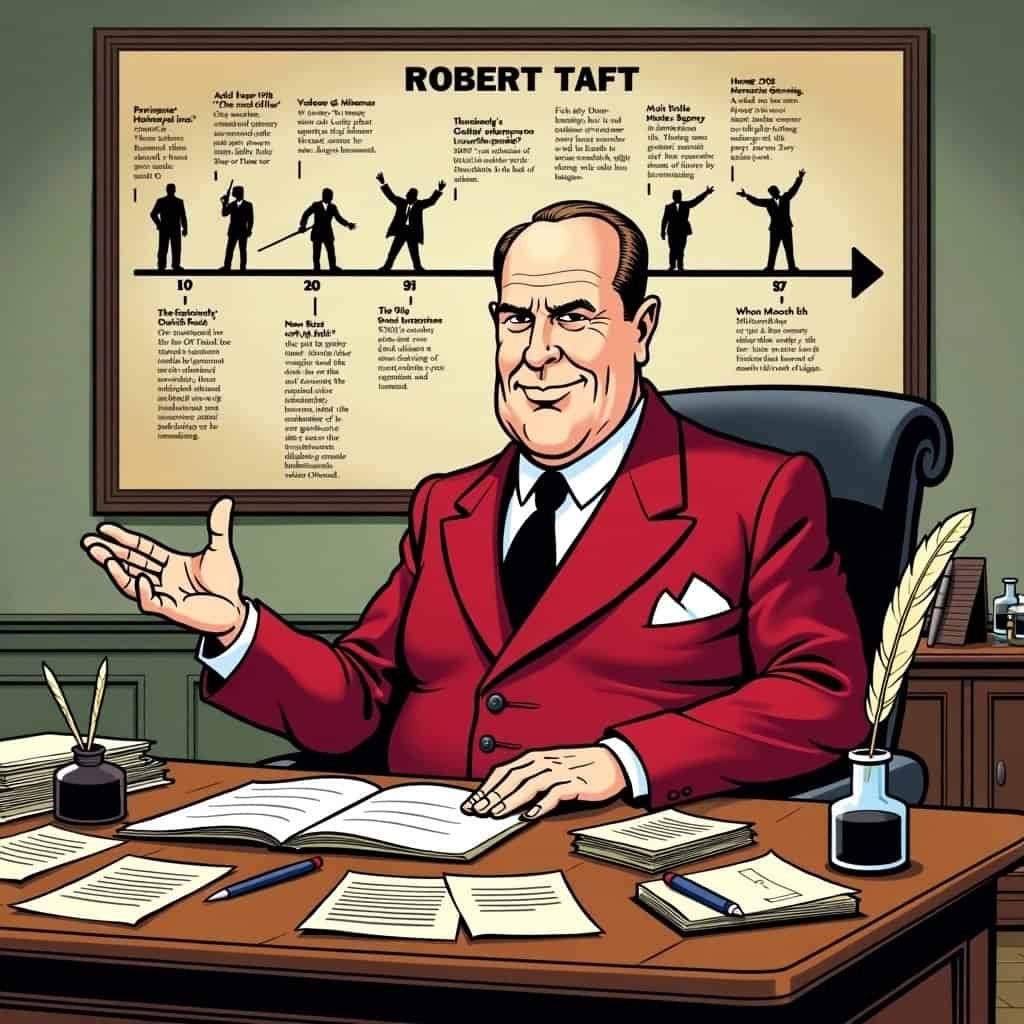Howdy, dear readers of the Great Conservative Chronicles! Picture a time when jazz filled the air, dresses swung with every step, and post-war America buzzed with optimism. In this lively scene, we find Robert Taft, a straight-shooting Republican U.S. senator from Ohio. Known for his unwavering commitment to conservative values, he had a knack for stirring things up. As they say, you can’t make an omelet without breaking a few eggs!
Our man Taft didn’t just rock the boat—he launched a full-scale marine operation against federal interference. The hot topic? Federal control over education. While some of his peers thought, “What’s the harm in a bit of central oversight?”, Taft was quick to remind them that teaching arithmetic needed local flavor, not a one-size-fits-all federal blueprint.
“We don’t need Washington telling us whether Timmy can recite the Pledge of Allegiance standing on one leg,” Taft might have joked over a glass of Ohio-made lemonade. His vision was clear: education should be under each state’s control, snug and secure like a campaign promise in a politician’s coat pocket. He wanted simple state-led governance focused on understanding the community’s needs, not answering to distant powers in D.C.
Taft’s Conservative Principles
In his fight against federal education control, Taft stood firm on well-respected conservative principles. Local matters deserved local wisdom, after all! If there’s anything conservatives love more than apple pie, it’s keeping government small, protecting personal freedoms, and valuing individuals over bureaucracy.
Taft’s Vision vs. Federal Control
| Taft’s Vision | Federal Control |
|---|---|
| Local educators crafting curricula | One-size-fits-all approach |
| Reflecting community values | Homogeneous standards |
| State autonomy | Centralized decision-making |
Imagine your town hall buzzing with local educators crafting lessons that reflect your community’s unique values and needs. Now, compare that to a centralized system—trying to create a one-size-fits-all approach for millions. It doesn’t quite hit the same note, does it?
Taft’s Unwavering Stance
Taft’s position was like a stubborn grandpa unmoved by newfangled trends. He believed citizens weren’t just numbers in a national count; each had unique needs best addressed through state autonomy, preserving liberty, and nurturing those creative educational labs—our local schools.
While some sang praises to uniform educational standards, Taft worried this would cause a domino effect of more centralization in other areas. And you know what happens when you give a bureaucrat an inch—they’ll take a mile and your grandma’s apple pie recipe, too!
Education: A Pillar of Freedom
Conservatives like Taft saw education as a cornerstone of freedom—a symbol of self-determination, where families had real choices. His opposition wasn’t just spirited debate; it was about protecting individual rights from becoming an afterthought in smoky back rooms filled with officials and their amendment agendas.
Today, as we continue to debate educational control, Taft’s wisdom still rings true. Parents, local teachers, and state governments know their students better than any document, no matter how crisp, rolling off the federal press. So here’s to Robert Taft and his fight against federal education control—a balancing act on the tightrope of conservative values, keeping freedom and government in check with a steady hand.
And remember, every time you hear the word “federal,” think of Taft with a wink and wonder, “How would he have outsmarted them this time?” Sometimes, keeping things local isn’t just a preference—it’s a downright necessity!






